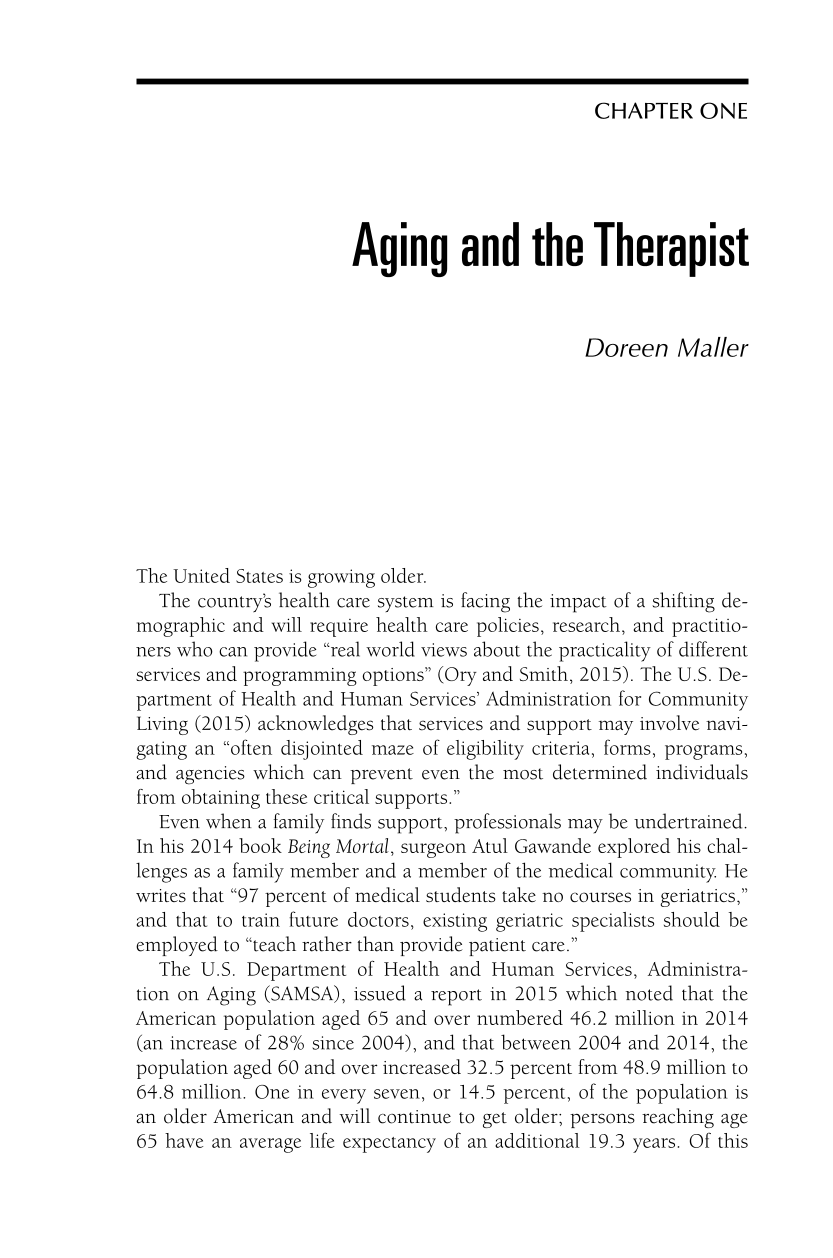CHAPTER ONE
Aging and the Therapist
Doreen Maller
The United States is growing older.
The country’s health care system is facing the impact of a shifting de-
mographic and will require health care policies, research, and practitio-
ners who can provide “real world views about the practicality of different
services and programming options” (Ory and Smith, 2015). The U.S. De-
partment of Health and Human Services’ Administration for Community
Living (2015) acknowledges that services and support may involve navi-
gating an “often disjointed maze of eligibility criteria, forms, programs,
and agencies which can prevent even the most determined individuals
from obtaining these critical supports.”
Even when a family finds support, professionals may be undertrained.
In his 2014 book Being Mortal , surgeon Atul Gawande explored his chal-
lenges as a family member and a member of the medical community. He
writes that “97 percent of medical students take no courses in geriatrics,”
and that to train future doctors, existing geriatric specialists should be
employed to “teach rather than provide patient care.”
The U.S. Department of Health and Human Services, Administra-
tion on Aging (SAMSA), issued a report in 2015 which noted that the
American population aged 65 and over numbered 46.2 million in 2014
(an increase of 28% since 2004), and that between 2004 and 2014, the
population aged 60 and over increased 32.5 percent from 48.9 million to
64.8 million. One in every seven, or 14.5 percent, of the population is
an older American and will continue to get older; persons reaching age
65 have an average life expectancy of an additional 19.3 years. Of this









































































































































































































































































































